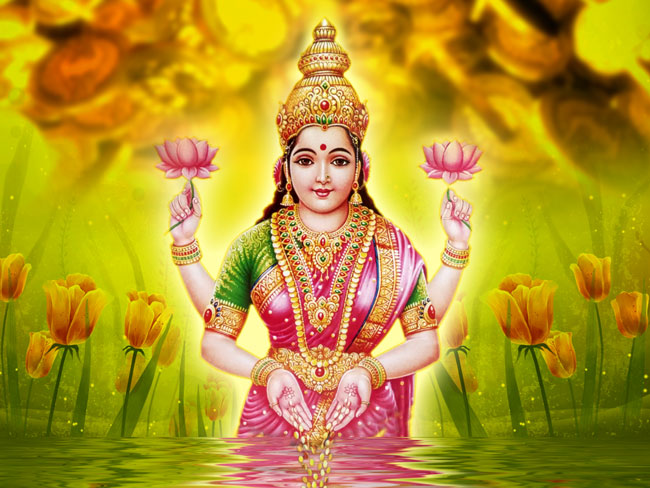Puja for Diwali
Puja for Diwali: Invoking Prosperity with Lakshmi Pooja
Diwali, the Festival of Lights, is among the most cherished and widely celebrated festivals in India. It is a time when Indians all over the world come together to bask in the radiant glow of this beautiful festival. At the heart of Diwali celebrations lies an essential ritual: Lakshmi Pooja.
Lakshmi, revered as the goddess of light, beauty, good fortune, and wealth, is worshipped during Diwali to usher prosperity and blessings into one's life. Legend has it that she does not favour those who are lazy, untidy, or who seek her solely for material wealth. Therefore, before Lakshmi Pooja, devotees actively engage in cleaning their homes and approach her with utmost devotion.
The Legend of Lakshmi
According to Hindu mythology, Lakshmi is believed to be the daughter of the sage Bhrigu. Legends narrate that during a period of divine exile, the gods were sent into exile, and Lakshmi took refuge in the milk ocean. She was reborn when the gods and demons churned the ocean to obtain 'amrut,' the nectar of immortality. As soon as the gods caught a glimpse of her mesmerizing beauty, they all fell in love with her. Initially, Lord Shiva claimed her as his wife, but as he had already received the Moon, it was ultimately Lord Vishnu who was chosen by the goddess as her consort.
Performing Lakshmi Pooja
Lakshmi Pooja is a meticulously performed ritual. Here's a step-by-step guide:
- Preparation: Cleanse the area designated for the pooja. Place a raised platform with fresh cloth for the installation of the goddess.
- Kalash Placement: Position a kalash (pitcher) made of gold, silver, copper, or terracotta on the platform. Fill three-fourths of the Kalash with water and place a betel nut, a flower, a coin, and some rice at its base.
- Decorate the Kalash: Adorn the Kalash with mango leaves and cover it with a plate filled with rice grains. Drawing a lotus with turmeric powder over the rice grains is considered auspicious. Place the idol of Goddess Lakshmi on top of it, along with some coins.
- Commence the Pooja: Once the Goddess is installed, the Pooja begins. Along with Goddess Lakshmi, Lord Ganesha is also worshipped. It is believed that worshipping both deities together is highly auspicious as it combines wisdom and fortune. Place the idol of Lord Ganesha in front of the Kalash, towards the right (South-West direction). Placing ink and books related to your business or occupation in front of Lord Ganesha is said to bestow wisdom and knowledge.
- Offerings to the Goddess: For an elaborate pooja, you can offer sandalwood paste, saffron paste, fragrance (itra), turmeric (haldi), kumkum (vermilion), Abeer (coloured powder), and Gulal (colourful powder) to the goddess. A garland of cotton balls is also considered dear to Goddess Lakshmi. In addition to earthen lamps, lighting incense sticks and dhoop (incense cones) and performing a detailed havan (sacred fire ritual) can add to the auspiciousness.
- Aarti and Conclusion: Conclude the Pooja with an aarti (ceremonial waving of a lit lamp or camphor) dedicated to Goddess Lakshmi.
In the realm of business, it is customary to worship account books during Lakshmi Pooja. This symbolizes the pursuit of wealth and financial prosperity.
In essence, Lakshmi Pooja not only calls for external cleanliness but also a pure heart and unwavering devotion. Some regions even worship the broom on the day of Diwali or Lakshmi Pooja, emphasizing the significance of cleanliness.
To wrap up, Lakshmi Pooja during Diwali is not just a ritual; it is an invocation of prosperity, abundance, and financial well-being. It celebrates the goddess who brings fortune into our lives, provided we welcome her with devotion and sincerity.





